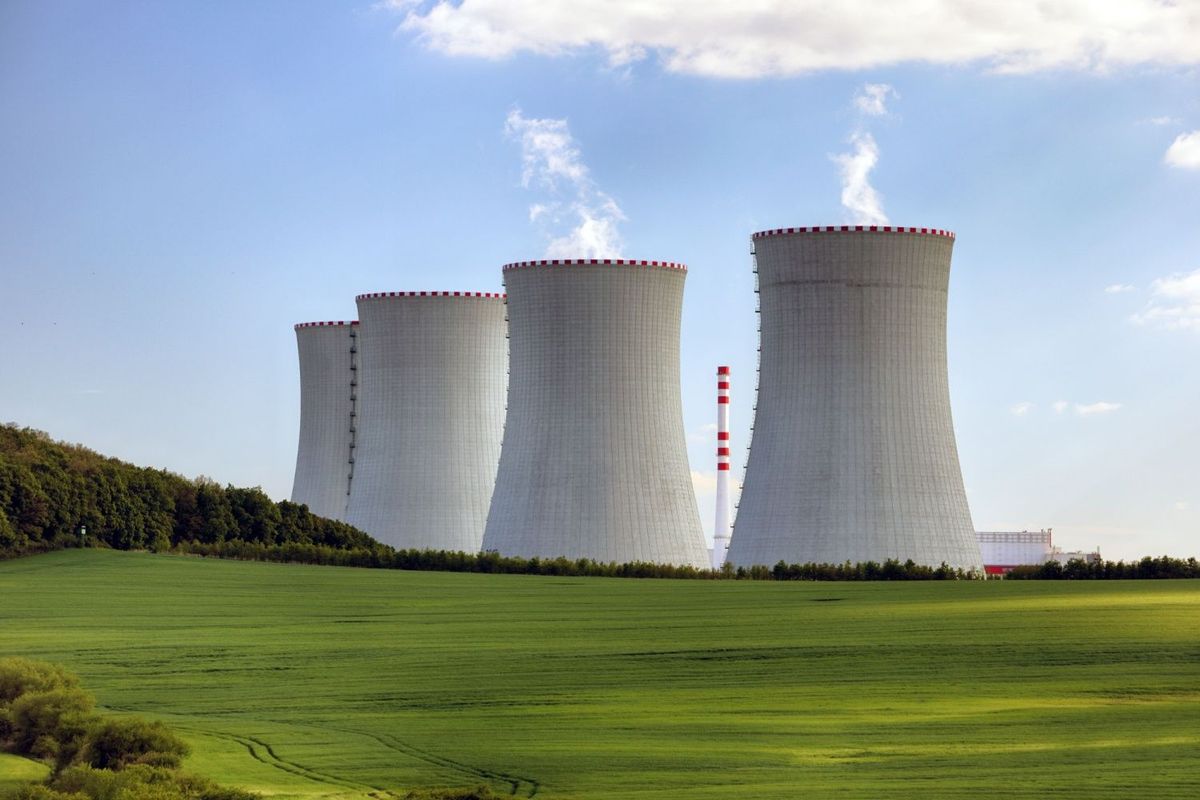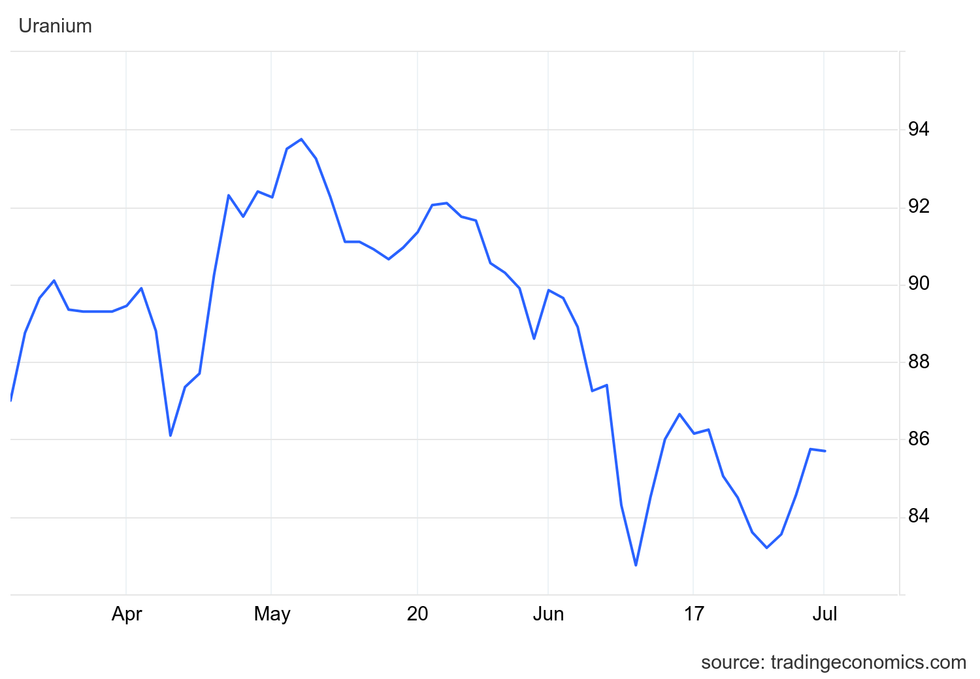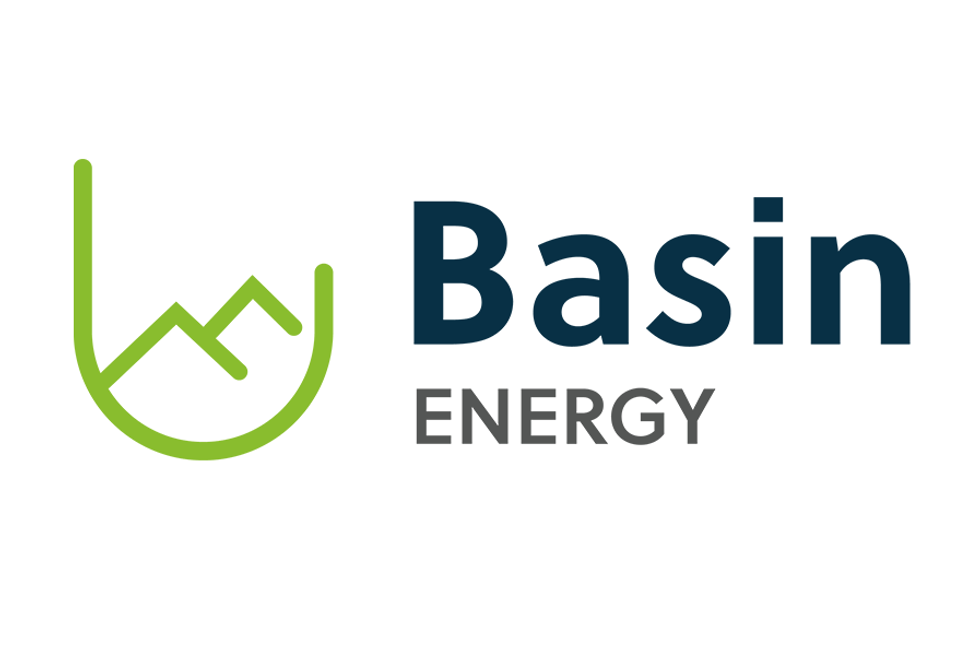Uranium Price Update: Q2 2024 in Review
Uranium prices remained rangebound for Q2, but experts agree that the energy commodity's long-term fundamentals remain positive.

After reaching a 17 year high in January, uranium prices consolidated in Q2, holding above US$82 per pound.
Despite the cooldown, geopolitical tensions, supply concerns and resource nationalism added support to the uranium sector over the 90 day period, preventing the energy fuel from dipping below the US$80 level.
Some analysts believe the correction is part of the uranium market's ongoing bull run.
“Although the price of uranium has appreciated significantly, we’re still well shy of the record US$135 per pound realized in 2007, or US$200 per pound when adjusted for inflation," Steven Schoffstall, director of ETF product management at Sprott, wrote in an April 25 note on uranium's resurgence. "Rising global commitments to nuclear energy and other supporting factors are helping to make uranium a more compelling investment than ever."
Starting the quarter at US$87.26, uranium values had contracted slightly by the end of June to hit US$85.76. While prices moved slightly lower, market fundamentals still favor a higher uranium price in the months and years to come.

Uranium price, Q2 2024.
Chart via Trading Economics.
Schoffstall states that a positive trend working in uranium’s favor is the COP28 commitment to triple nuclear capacity by 2050. Globally, 152 nuclear reactors are currently either under construction or planned.
Additionally, in early January, the UK government announced plans to expedite investment decisions for new nuclear projects, aiming to quadruple its nuclear capacity by 2050. Schoffstall notes that with this expansion, nuclear energy would account for 25 percent of Britain's electricity demand, up from 15 percent previously.
US ban on Russian uranium boosts prices
After holding in the US$86 to US$89 range through April, uranium prices were pushed higher in May by the news that the Biden administration will be banning Russian uranium imports.
“This new law reestablishes America’s leadership in the nuclear sector. It will help secure our energy sector for generations to come," said National Security Advisor Jake Sullivan on May 13.
"And — building off the unprecedented US$2.72 billion in federal funding that Congress recently appropriated at the President’s request — it will jumpstart new enrichment capacity in the United States and send a clear message to industry that we are committed to long-term growth in our nuclear sector."
The decision aligns with goals set last December by the US and its allies, including Canada, France, Japan and the UK, which collectively pledged US$4.2 billion to expand uranium enrichment and conversion capacity.
The US has relied on Russian uranium since the 1993 Megatons to Megawatts program, which involved converting 500 metric tons (MT) of uranium from dismantled Russian nuclear warheads into reactor fuel.
According to the US Energy Information Agency, Russian imports accounted for 12 percent of the nation’s uranium supply in 2022. The new legislation aims to shift this dependenct toward local uranium sourcing.
The announcement raised questions about the US’ ability to source uranium domestically and through allies, which proved beneficial for US-focused producers like Energy Fuels (TSX:EFR,NYSEAMERICAN:UUUU).
Uranium miners bringing supply back online
As countries look to bolster their nuclear energy capacity, issues around future supply are intensifying. In 2022, total global production satiated just 74 percent of global demand, pointing to a sizable shortfall.
If the world intends to meet the COP28 obligation of tripling nuclear capacity, increased uranium production is needed. Some of that supply will come from projects that were curtailed due to weak prices in the 2010s.
Restarting uranium production at these projects will likely prove easier than bringing new projects online due to the decades-long process of getting mines approved. Indeed, several uranium companies in the US, Canada and Australia have already announced plans to restart existing mines due to recent market optimism.
In late November, Cameco (TSX:CCO,NYSE:CCJ) announced it would resume operations at its McArthur River/Key Lake project in Saskatchewan. In January of this year, Denison Mines (TSX:DML,NYSEAMERICAN:DNN) and Orano Canada revealed plans to restart the McClean Lake project, also in Saskatchewan's Athabasca Basin.
On the other side of the border, IsoEnergy (TSXV:ISO,OTCQX:ISENF) is preparing to restart its Tony M underground uranium mine in Utah, with first production slated for 2025.
In Australia, Paladin Energy (ASX:PDN,OTCQX:PALAF) resumed commercial production at its Langer Henrich mine in late March, with the first customer shipment expected in July. The company subsequently released guidance for its 2025 fiscal year, outlining 4 million to 4.5 million pounds of production. Paladin's goal is for Langer Heinrich to reach nameplate production of 6 million pounds annually by the end of the 2026 calendar year.
“Now that uranium prices have returned to more profitable levels, many previously closed mines are taking steps to start producing again,” said Schoffstall in his note. “However, adding to the supply of uranium isn’t as simple as flipping a switch, and increasing uranium production is proving difficult.”
Case in point — the sector’s largest producers have had to reduce their 2024 production guidance.
In 2023, Cameco, the largest pure-play uranium miner by market cap, had to lower the production forecast for its Cigar Lake mine and its McArthur River/Key Lake operations, expecting a nearly 3 million pound shortfall.
Similarly, Kazatomprom, which produces about 44 percent of the world’s uranium, announced in February that it will fall short of its production targets in 2024, and likely in 2025 as well.
These positive long-term fundamentals pushed uranium to a Q2 high of US$93.72 on May 8.
Paladin's Fission offer hints at more MA
Amid that environment, some producers started looking for uranium deals in June.
Most notable was Paladin's C$1.4 billion offer for Saskatchewan-focused Fission Uranium (TSX:FCU,OTCQX:FCUUF).
“The acquisition of Fission, along with the successful restart of our Langer Heinrich Mine, is another step in our strategy to diversify and grow into a global uranium leader across the top uranium mining jurisdictions of Canada, Namibia and Australia,” said Paladin CEO Ian Purdy in a June 24 press release.
“Fission is a natural fit for our portfolio with the shallow high-grade PLS project located in Canada’s Athabasca Basin. The addition of PLS creates a leading Canadian development hub alongside Paladin’s Michelin project, with exploration upside across all Canadian properties," he continued.
While some market watchers think the deal could open the floodgates for more M&A activity in the sector, others have warned of potential pitfalls like those witnessed during uranium’s last bull market.
During that period, only one major acquisition led to the development of a new uranium mine: China General Nuclear's 2012 purchase of Extract Resources, which resulted in Namibia's Husab mine. Other deals failed to produce viable assets as they were often based on promising geological surveys rather than proven reserves.
This time, industry players are expected to focus on acquiring high-quality, low-cost assets that can withstand market downturns. The Fission deal emphasizes the importance of prioritizing "large single asset scale" properties, Arthur Hyde, partner and portfolio manager at Segra Capital, told Energy Intelligence.
“This is perfectly predictable and probably exactly what the market should be seeing,” he continued during the interview. “I would say that we're kind of in a unique commodity cycle here, where I don't think smaller bolt-on acquisitions will be enough to satiate the supply-demand gap. What I think we're seeing in the Fission deal is a premium for scale and I think that's something that you'll continue to see through the cycle."
Tailwinds seen pushing prices higher
Uranium's May rally was short-lived, with prices returning to rangebound status through June. Values registered a Q2 low of US$82.07 on June 11, but remained in multi-decade high territory.
“Besides being a pause in a longer-term bull market, the uranium spot market has been susceptible to broader factors like broader commodities weakness, seasonal softness and a lack of expected buying activity with the passage of the Prohibiting Russian Uranium Imports Act,” wrote Jacob White, ETF product manager at Sprott Asset Management.
“On the other hand, fundamentals continue to strengthen with nuclear power plant restarts, new builds and a deepening supply deficit. Notably, the spot market may have paused, but the increasingly positive fundamental picture has played out differently for both the term market and uranium miners,” he further explained.
This sentiment was shared by panelists polled by FocusEconomics. They noted that June saw prices fall for the third time in four months, although they remain near the highest levels since the pre-financial crisis bubble in 2007.
This decline likely indicates a market correction, as the spot price has eased this year, while the long-term contract price, which better reflects market fundamentals, has increased.
Against that backdrop, the panelists expect to see prices remain around their highest level in more than a decade for the rest of the year, with a Q4 price forecast of US$91.72. “Over 2024 as a whole, they see prices averaging the highest level since 2007, with the pledge at the December UN COP 28 summit to triple nuclear energy output driving a worldwide push for uranium supply — which is relatively inelastic,” the firm's report reads.
Don’t forget to follow us @INN_Resource for real-time updates!
Securities Disclosure: I, Georgia Williams, hold no direct investment interest in any company mentioned in this article.
Editorial Disclosure: Energy Fuels is a client of the Investing News Network. This article is not paid-for content.
- Uranium Stocks: 5 Biggest Companies ›
- Top 10 Uranium-producing Countries ›
- Uranium Reserves: Top 5 Countries ›
- When Will Uranium Prices Go Up? ›






